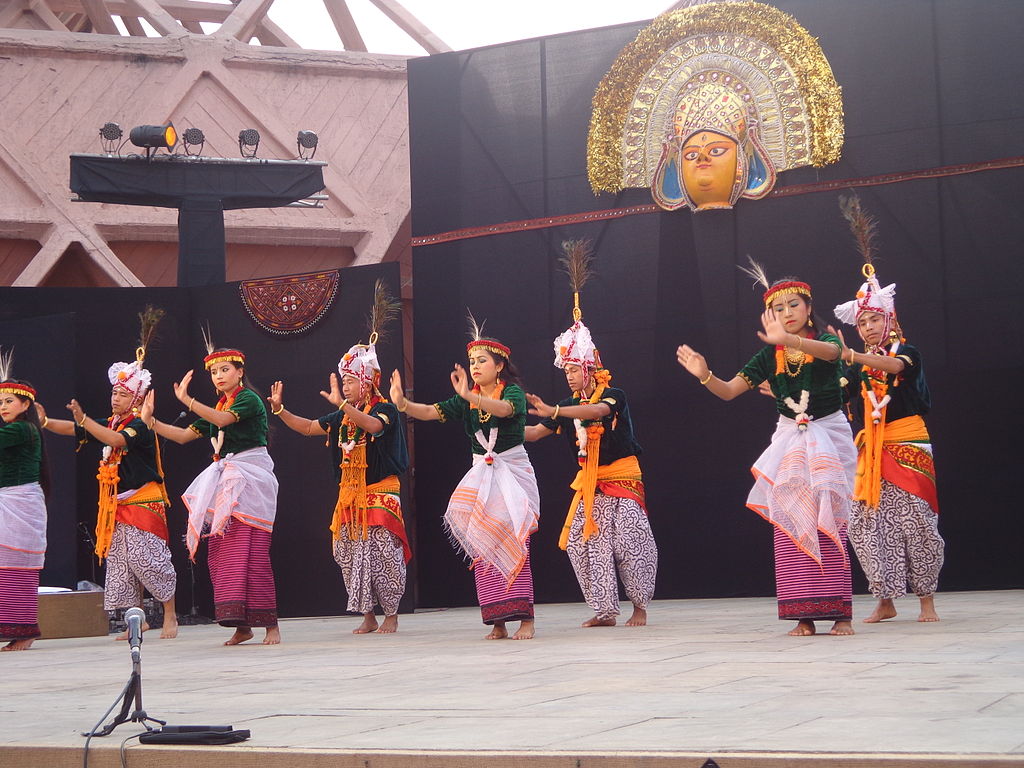Manipur because of its geographical location has been protected from outside influences of the world. Its entire art and culture are pure in their original state. Yes, some of it has changed over time but it has not lost its original touch.

The roots of Lai Harabo go back to as far as the pre-Vaishnavite period. Lai Harabo is the earliest folk dance that later became the basis of other folk dances. Lai Haraoba means ‘the merrymaking of the gods’. The dance is performed as a ceremony offering to the gods of songs and dance. Lai haroba festival is created to please Umang Lai that is worshiped by Meetei (also spelled as meitei) people. Umang Lai is the traditional deity of Sanamahism (meetei religion).
Lai harabo is not only celebrated in Manipur where metei people reside but it is also celebrated in neighboring areas such as Assam, Myanmar, Tripura, and Bangladesh.
Lai harabo festival
Metei people are spread all over Manipur. The festivities during the festival are held at nearby shrines. There are no fixed dates for the lai harabo festival. Between the months of February from February to June, shrines set their own dates for the festival. The festival can be celebrated in a short time period of 3 days and it can be celebrated in a long time period of a month. The duration of festival too depends on the shrines they are being conducted at. Music and dance are important parts of this festival.
Lai harabo dance
Lai harabo festival is best known for its elaborate dance ritual dedicated to deities. The famous dance of Manipur Ras Lila has been inspired by lai harabo dance.
The beginnings of the dance show the beginning of the world and how methei religion was created. The songs of lai harabo dance performance talk about the glory of the deity residing in the shrine. Maibis start the dance performance and can be joined later by men, women, and children of the community. Everyone can participate disregarding if they are official performers or not.
A group of maibis also performs a ritual dance to draw the sacred presence of the deity. A banana leaf is put in the center with a little offering.
The dance of maibis is detailed. It starts with the creation of every part of the body from carving eyes to drawing lines of the sole. A baby is formed. Then the baby is brought up with care while meeting his basic needs. When baby grows up he needs clothing, a hillside is cleared up to produce cotton, and then it is processed to make clothing. To keep the baby safe a house is made for which frame is made and mud is prepared to plaster the wall. When the baby is grown up he goes fishing, fishing here represents desires. In detailed rituals materialistic segments are present.
Lai harabo dance is not a single dance but a series of dance performances done throughout the festival. It has six types of dance forms, Sekmai Haraoba, Kakching Haraoba, Moirang Haraoba, Kanglei Haraoba. Andro Haraoba, and Chapka Haraoba.
Dance Performers
Maibas (priests) and maibis (priestesses) are the main performers of the dance. These two depict the creation of the world. During ritualistic dances, anyone from the community can join. Where some dances are limited to maibis and maibas others are flexible according to other’s desire to join.
Costume
Maibas and maibis wear traditional clothes long with other dancers. The entire attire includes a flower garment, feathers on the head, and other jewelry along with traditional clothing. Everyone celebrates this festival wearing colorful clothing which represents the gay mood of the community.
Where 30 days celebration seems like a long time to celebrate a festival, 5 days seem too short but in any scenario, you will never get bored of the activities of lai harabo. It is not only a festival to please the deity it represents the entire community, their culture, and their beliefs. If you are ever in Manipur from February to June month make sure to witness this festival.
